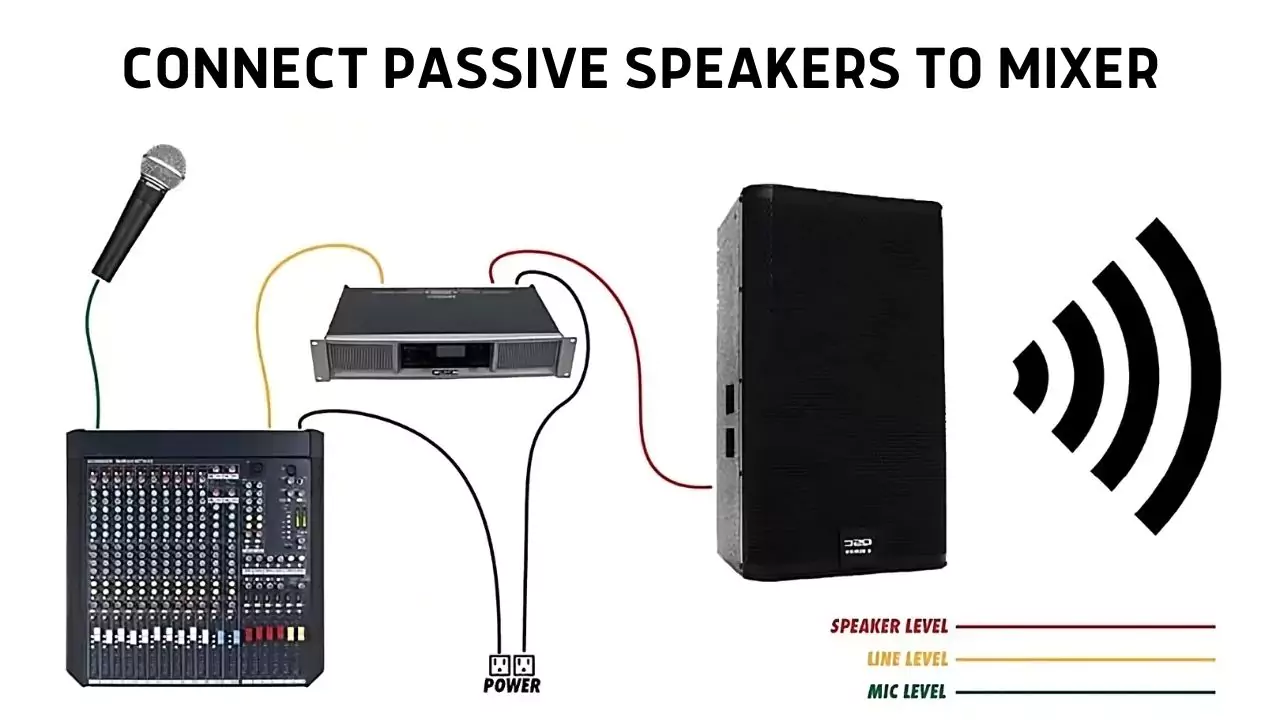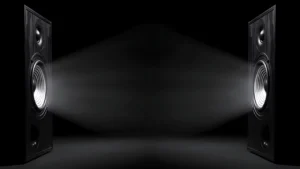If you want to connect passive speakers to a Mixer, then you have to first choose the amplifier depending on the wattage of the passive speaker. Next, connect the Mixer to the amplifier using an XLR cable. Confirm that the cables are seated properly and then connect the passive speaker to the amplifier. Finally, turn on the system and check whether you can get the desired audio output.
If you are setting up a gaming system, then connecting a passive speaker to a mixer will provide you with a customized audio experience. It will also give you more control over the sound. Thus, you do not need any external power source to set up the audio.
Confused? Are you looking for a step-by-step process? Then, we can help you through this guide but first, let’s get the basics sorted.
In This Article:
What are powered mixers?
Powered mixers are basically devices that combine multiple signals which are then sent to power amplifiers. These are available in different shapes and sizes, but all have a built-in amplifier whose function is to boost the signal coming from the mixture. Some power mixes also have an EQ section which is meant for fine tuning the sound. Also, you can find mixers that have effective processors and these are meant to provide your high-end audio setup. They also add flavor to the mix you are creating.
If you are involved in small bands, then a powered mixer can help you to combine multiple signals and send them to power amplifiers. Moreover, you can also buy a power mixture for home studios to set up a pro gaming studio.
However, while choosing a power mixer, you must consider the number of channels, the features, and also the price.
Now, let’s get to know about the setup process
Items required for the setup
To continue with the setup process you need:
- A power amplifier
- Passive speaker
- XLR lead
- 13.5 mm jack
- A microphone
- A ¼ “ jack lead
Step 1: Choose the amplifier
Depending upon the wattage of the passive speaker, you need to choose the amplifier. You also need to check the speaker’s specific specifications and determine how loud they can play the amplifier. Moreover, it should be compatible with the wattage of the speakers. So, go through the different classes of amplifiers and understand how they can handle the energy. Then, based on your requirement and budget you need to opt for the best one.
What are the different classes of amplifiers?
There are 5 different classes of amplifiers and this distinction is based on how the amplifier can handle the energy: A, B, C, D, and G.
Class A Amplifier – These devices are one of the best among the lot and are considered to handle energy more efficiently. Moreover, they are also less efficient in terms of watt output.
Class B Amplifiers – They are comparatively less efficient than Class A amplifiers. But, in terms of watt output, these are more efficient.
Class C Amplifiers – These devices are the least efficient and when compared to others are not much used in audio systems.
Class D and Class G Amplifiers – When compared with Class A and Class B amplifiers, these are more efficient. However, they are not as much efficient as Class C amplifiers.
So, if you are looking for an amplifier that can provide high watt output then you must go for Class D and Class D amplifiers. Other than this, if you are looking forward to good sound quality, then you need to choose a Class A amplifier.
Step 2: Connect the mixer to the amplifier
After choosing the amplifier, you need to connect the mixer to the amplifier. If you are using an analog mixture, then you have to use XLR cables which have three pins. However, if you are using a digital mixture, then you need to use ¼” Jack leads or cables that have four pins. Also, if you are using an analog mixer along with a Class A and Class B amplifier, then you need one ¼” Jack leads.
Step 3: Connect passive speakers to the amplifier
Depending on the passive speaker that you are using, you have to connect it to the amplifier. If you are using a speaker cabinet to connect the devices you need speaker cables. However, you need XLR lead to connect the devices, if you are using a passive monitor. But, if you are using a powered monitor then there is no need of using any cable.
Step 4: Turn on and Test the system
After you have connected all the cables, now it’s time to turn on and test the system. Press the power button on the amplifier and also on the mixer. Now, you can use this system for any band show or for an exclusive audio during gaming.
Points to Remember
- You must always check and set the correct impedance for the passive speaker. Usually, there is a switch that you can use to make the changes
- If you are using Passive speakers with a cabinet then it has multiple inputs. So, check which input is responding to the signal while setting up the connection.
- You must power on the amplifier to hear any sound from the passive speakers. So, at first, you need to turn on the amplifier, set the output level, and then try to play music through the passive speakers.
Can you Power passive speakers without an amplifier?
Yes, you can power passive speakers without an amplifier by using a mixer. It will help to connect the passive speakers to the audio source. Also, you can control the speakers’ volume using the mixers’ master volume control feature. Be it a CD player or computer, you can easily connect the passive speakers.
To set up a passive speaker without an amplifier with a mixer, you have to connect the passive speakers to the mixer using RCA cables and a 3.5 stereo cable. Plug in the cables to their corresponding jack and then turn on the mixer and the audio source. Adjust the volume level and try to play your favorite track through the passive speaker.
What is the difference between an active speaker and a passive speaker?
The active speaker usually has the amplifier built into the speaker cabinet whereas a passive speaker has an external amplifier. You need to connect amplifiers through speakers and these are mostly used for home purposes, whereas you can find active speakers in audio systems such as Bluetooth speakers. Both have distinguished functions and if you are thinking of buying then the choice of speakers totally depends on the purpose of use.




